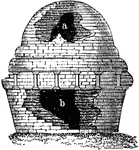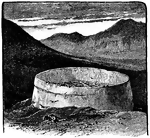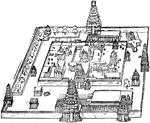This ClipArt gallery offers 73 illustrations of India, including architecture, religion, cities, and scenes of everyday life.

Stupa or Tope
A stupa (from Sanskrit and Pāli: literally meaning "heap") is a mound-like structure containing Buddhist…

Taj Mahal
"The Taj Mahal, or Mehal, ('Gem of Buildings'), is a famous mausoleum, erected at Agra, India, by Shah…

Taj Mahal
"This magnificent monument was erected by the Mogul emperor Shah Jehan (1625-1658), for a favorite wife…

Temple, Tanjore
"The great pagoda at Tanjore is by far the grandest temple in India, resting on a base 83 feet suare,…

Temple of Chillimbaram Entrance Elevation
All these buildings are of a pyramidal shape, with vertical stages, which are separated by curved roofs…

Tibet Coin
"Coin struck in Tibet, from specimen in India Library; inscribed "27th year (of cycle=1772 A.D.) from…

Tibet Coin
"Tibeto-Chinese coinage ("Kieniang, 58th year," i.e. 1793 A.D.)" —The Encyclopedia Britannica,…

Tomb of Sultan Humayun
The tomb of Sultan Humayun in Delhi, India is an example of Indo-Saracenic architecture.

Tower of Silence Built by the Parsees
"A tower, generally built about 25 feet high, on which the Parsees expose the bodies of their dead to…



